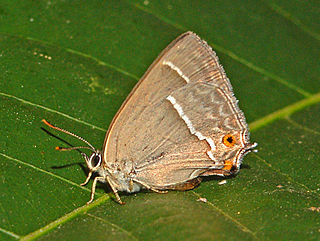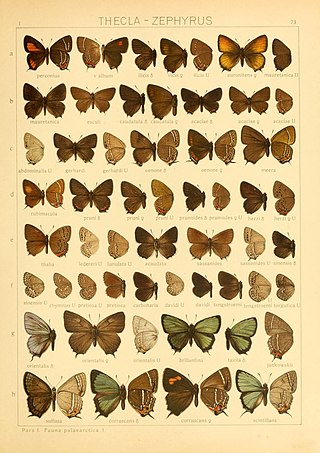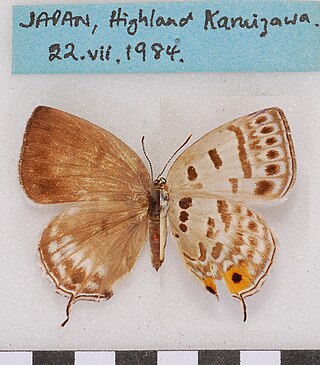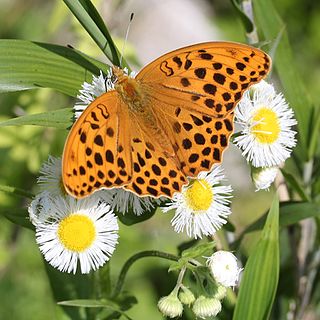
The silver-washed fritillary is a common and variable butterfly found over much of the Palearctic realm – Algeria, Europe and across the Palearctic to Japan.

The brown hairstreak is a butterfly in the family Lycaenidae. The range includes most of the Palaearctic.

The purple-edged copper is a butterfly of the family Lycaenidae.

The scarce large blue is a species of butterfly in the family Lycaenidae. It is found in Austria, Slovenia, Croatia, the Czech Republic, France, Georgia, Germany, Hungary, Italy, Japan, Kazakhstan, Mongolia, the Netherlands, Poland, Romania, Russia, northern Serbia, Spain, Switzerland, and Ukraine and East across the Palearctic to Japan. The species was first described by Johann Andreas Benignus Bergsträsser in 1779.

Scolitantides orion, the chequered blue, is a species of butterfly in the family Lycaenidae. It is found in Europe, Russia and east across the Palearctic to Japan.

Neozephyrus is a genus of butterflies in the family Lycaenidae. Species in this genus are mainly distributed in East Asia. The larval food plant is alder or - for Neozephyrus quercus - oak.

Diarsia brunnea, the purple clay, is a moth of the family Noctuidae. The species was first described by Michael Denis and Ignaz Schiffermüller in 1775. It is found in most of Europe, east to Transcaucasia, the Caucasus, central Asia, Siberia, the Kuriles, Amur, Ussuri, Sakhalin, Korea, Japan, and China, including China’s Tibet region.

Favonius taxila is a butterfly in the family Lycaenidae. It is found in the Russian Far East, north-eastern China, Korea and Japan.

Satyrium herzi is a butterfly of the subfamily Lycaeninae. It was described by Johann Heinrich Fixsen in 1887. It is found in the Russian Far East, north-eastern China and Korea.

Favonius orientalis is an East Palearctic species of hairstreak butterfly found in China, Amur, Ussuri, Kunashir, Japan, and Korea.

Antigius butleri is a small butterfly found in the East Palearctic that belongs to the lycaenids or blues family.

Japonica lutea is a small butterfly found in the East Palearctic that belongs to the lycaenids or blues family.

Chrysozephyrus smaragdinus is a small butterfly found in the East Palearctic that belongs to the lycaenids or blues family.

Euphydryas intermedia synonym ichnea is a small butterfly found in the Palearctic that belongs to the browns family. It occurs up to 2200 m above sea level.

Coenonympha amaryllis is a small butterfly found in the East Palearctic that belongs to the browns family.

Mimathyma schrenckii is a butterfly found in the East Palearctic that belongs to the Nymphalidae family.

Argynnis anadyomene is a butterfly found in the East Palearctic that belongs to the browns family.
Fabriciana nerippe coreana is a butterfly found in the East Palearctic that belongs to the Nymphalidae family.

Argynnis zenobia is a butterfly found in the East Palearctic that belongs to the browns family.

Mimathyma nycteis is a butterfly found in the East Palearctic that belongs to the browns family.




















